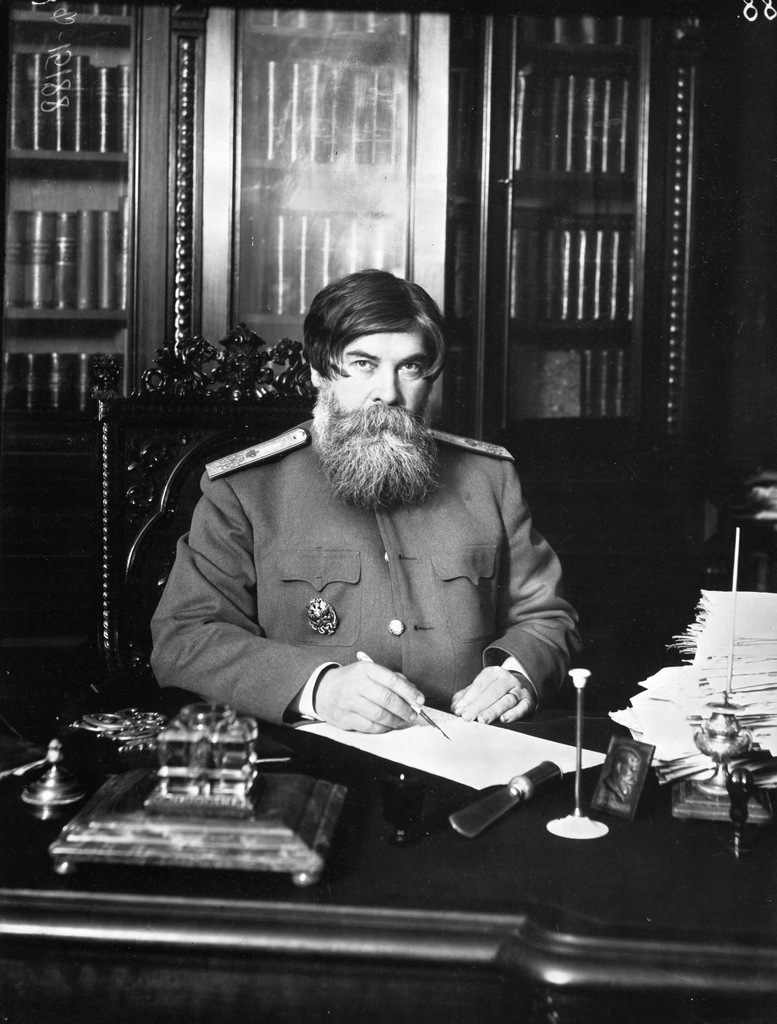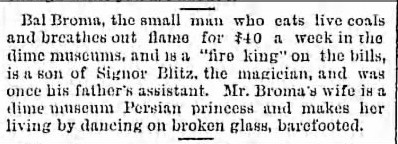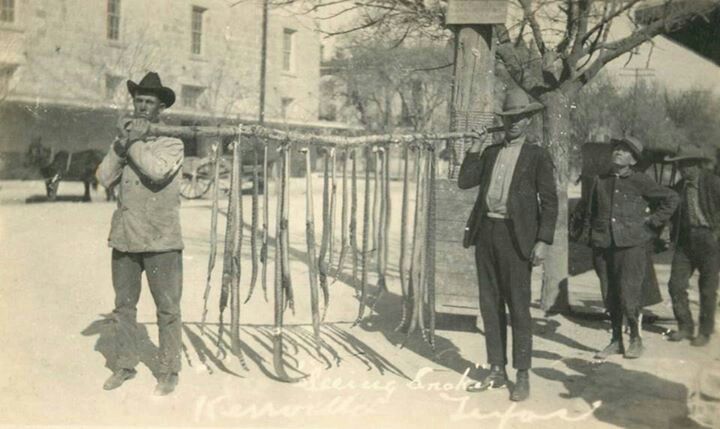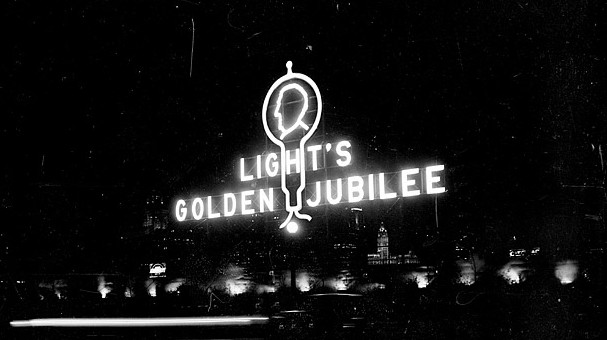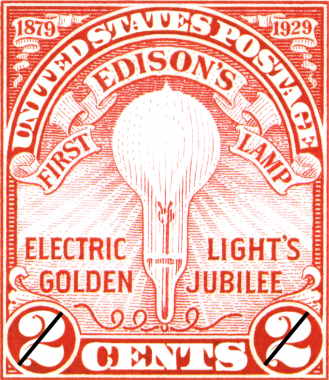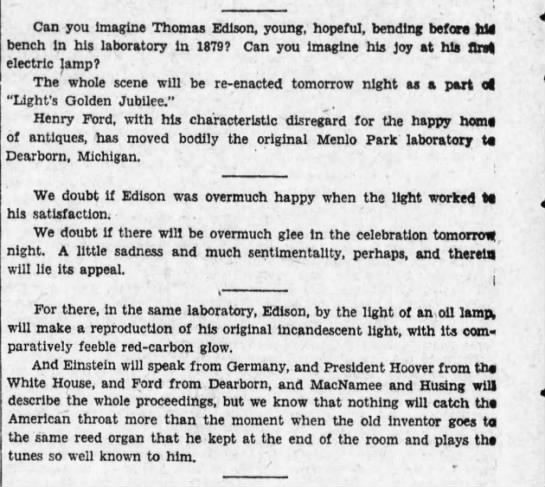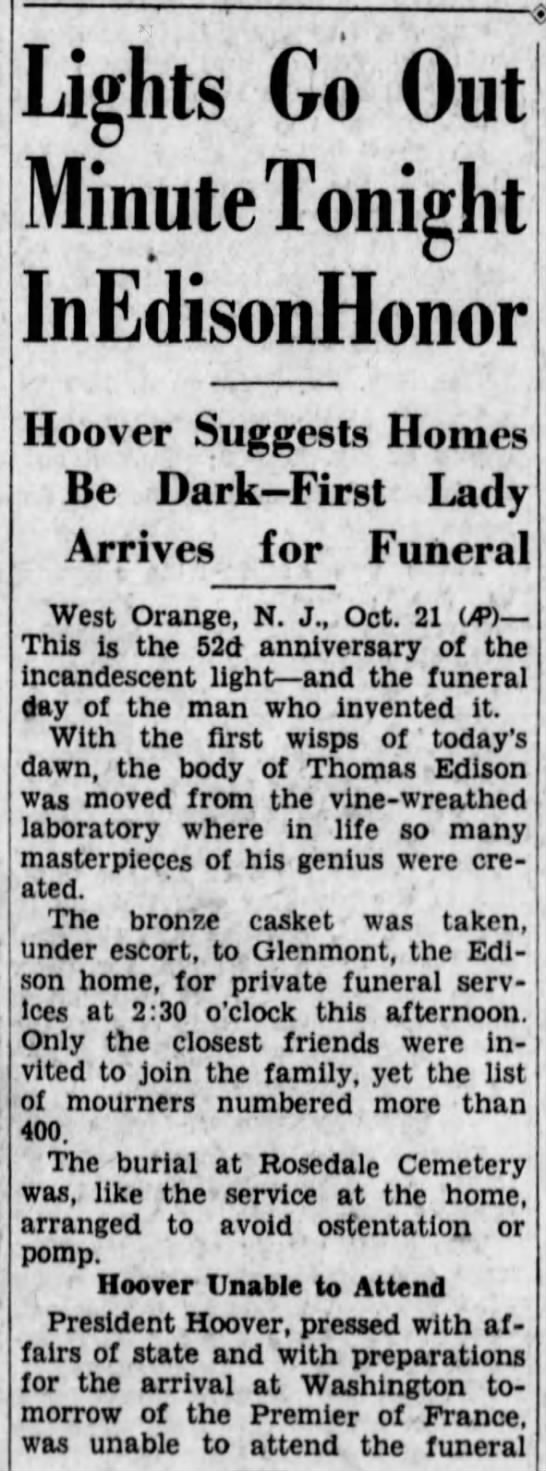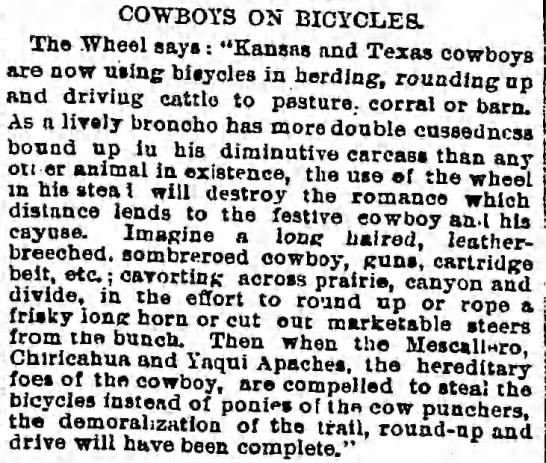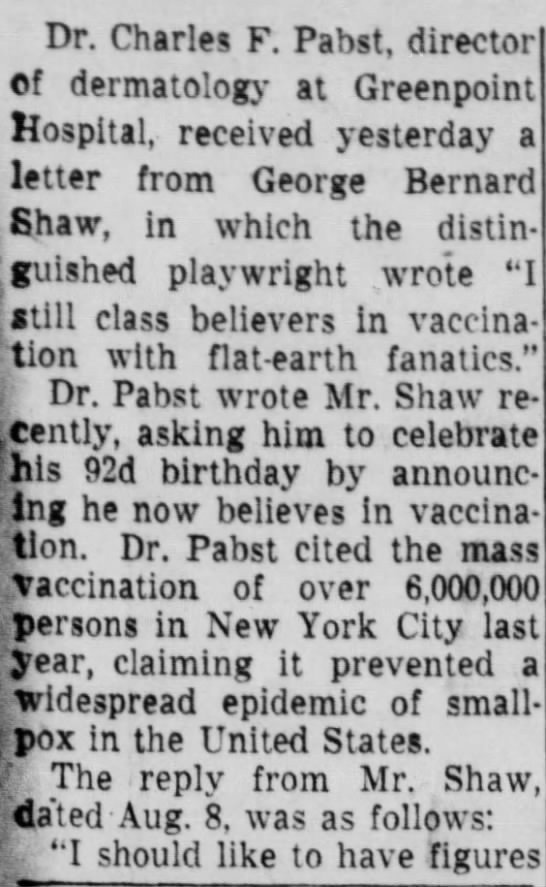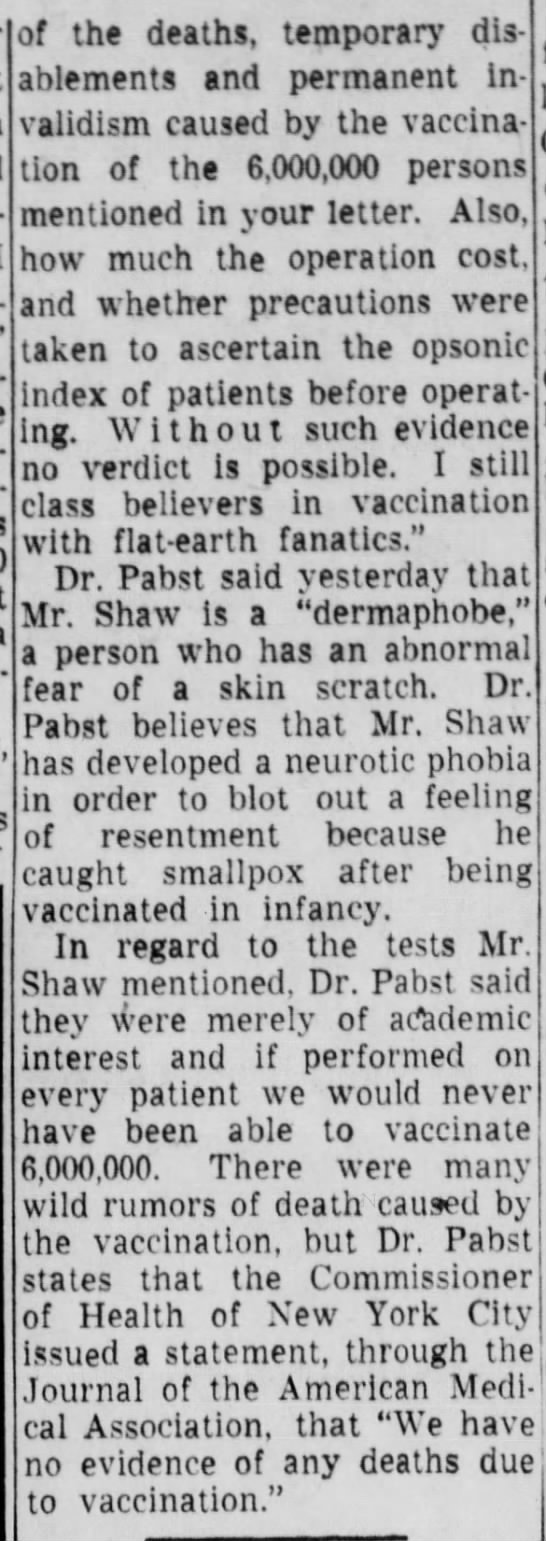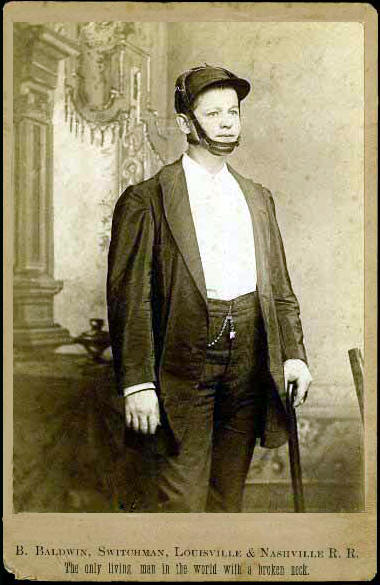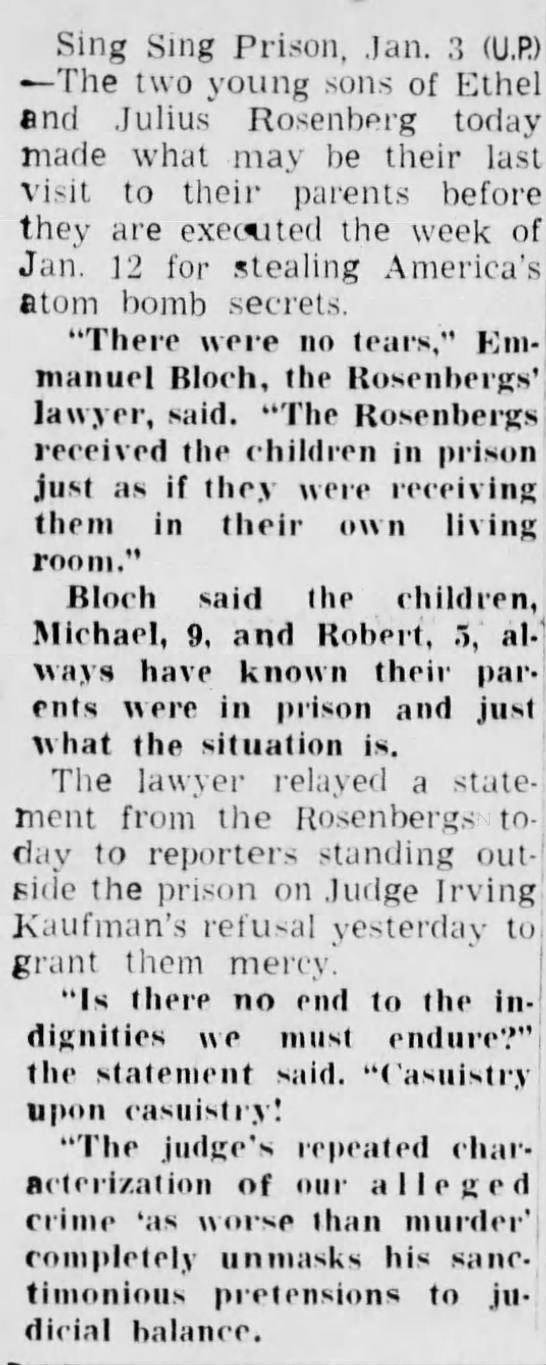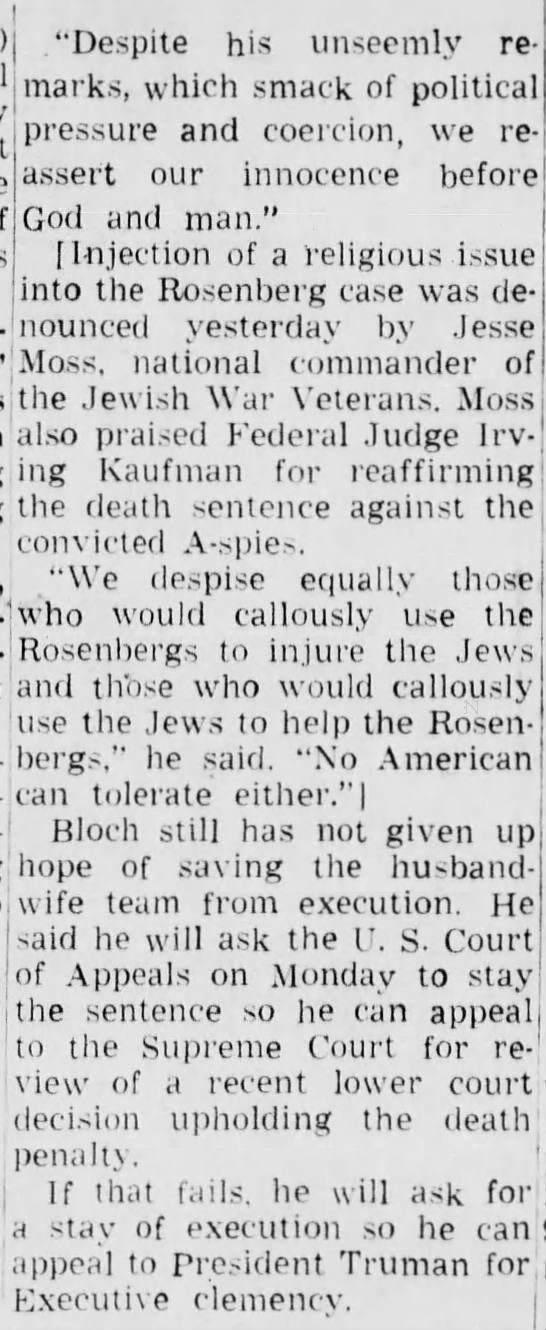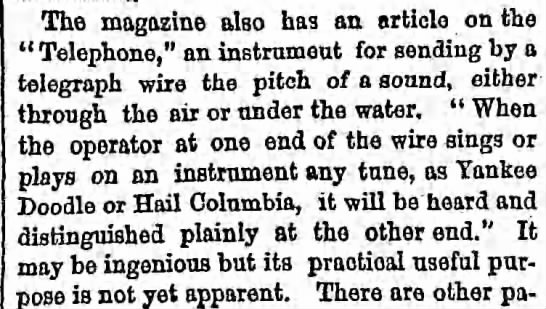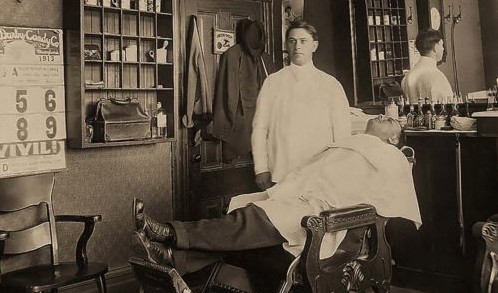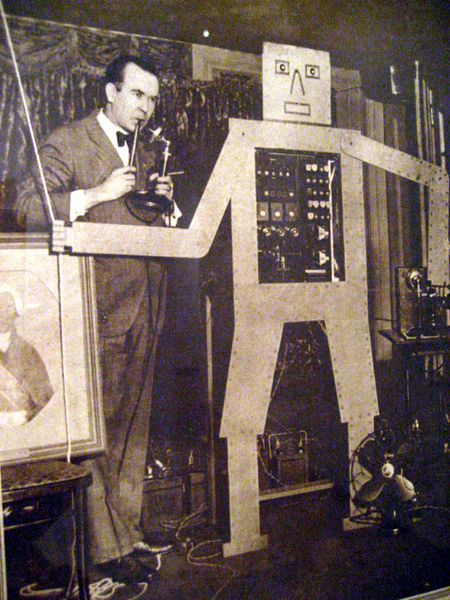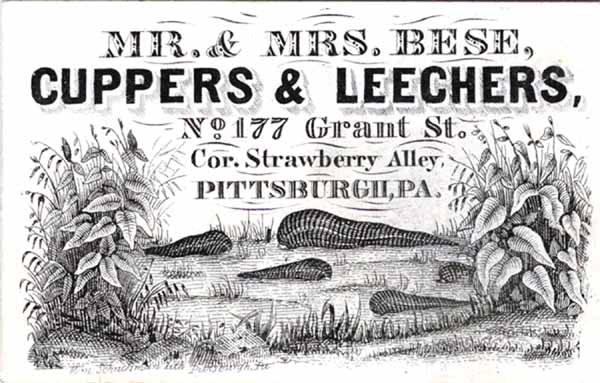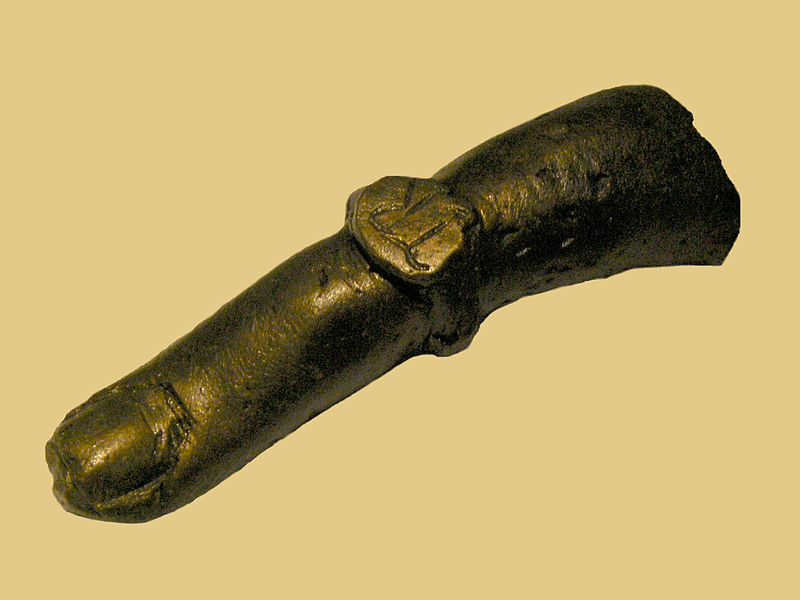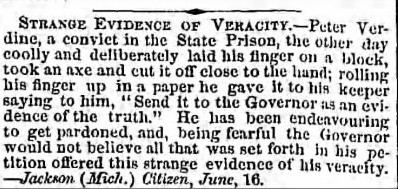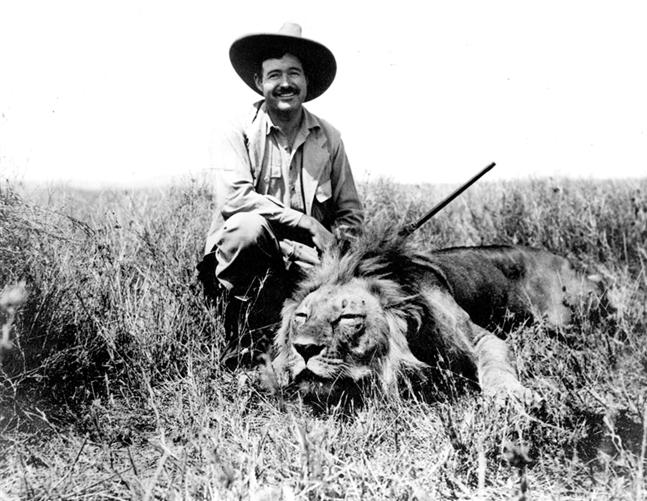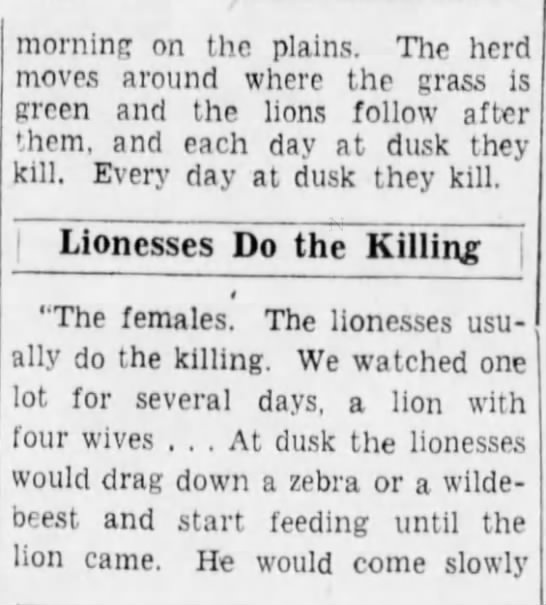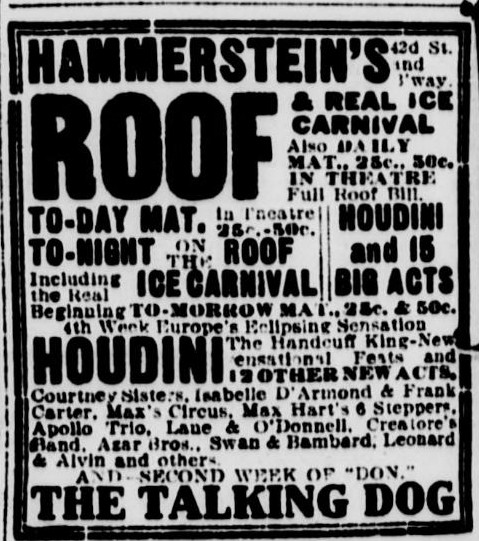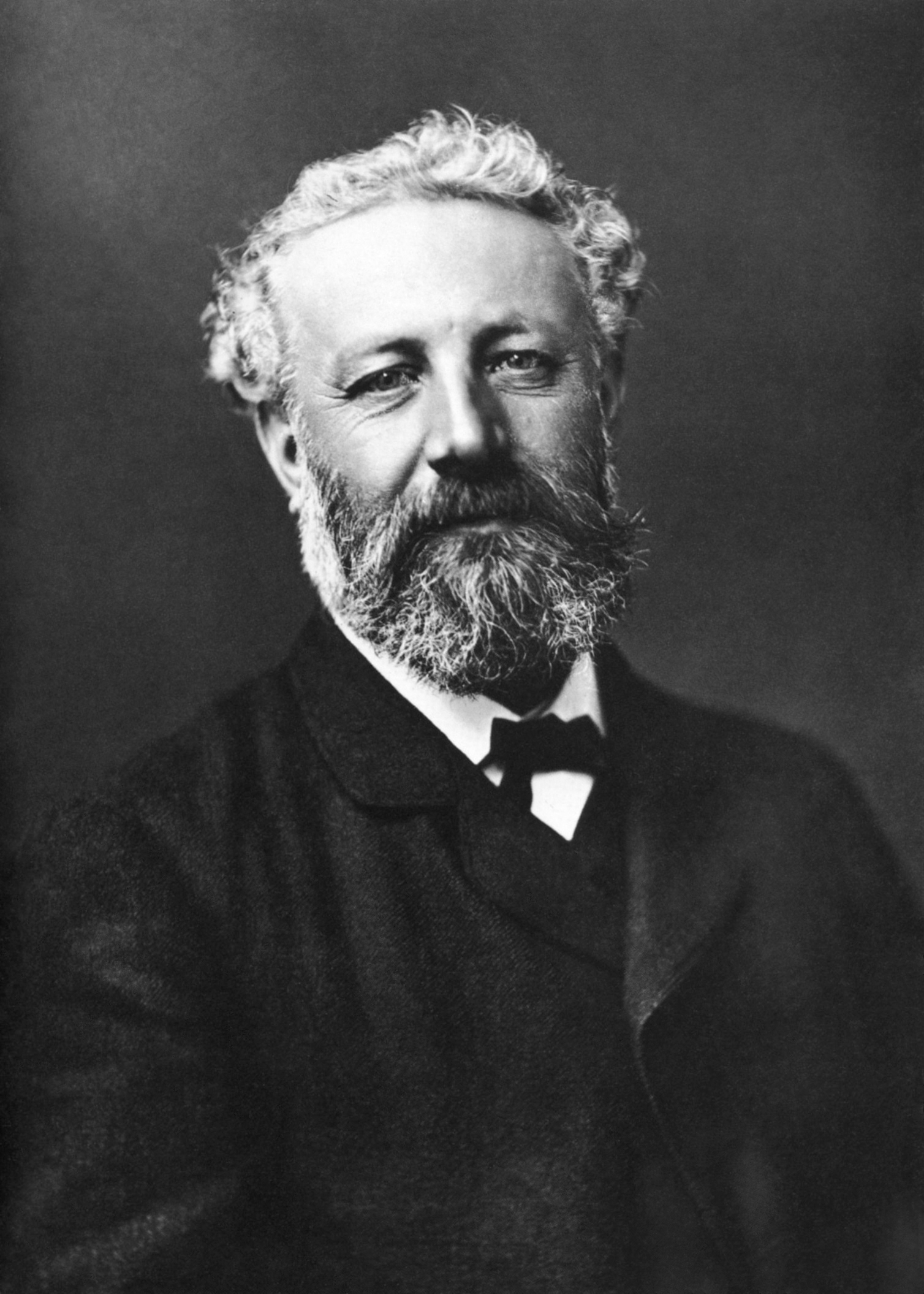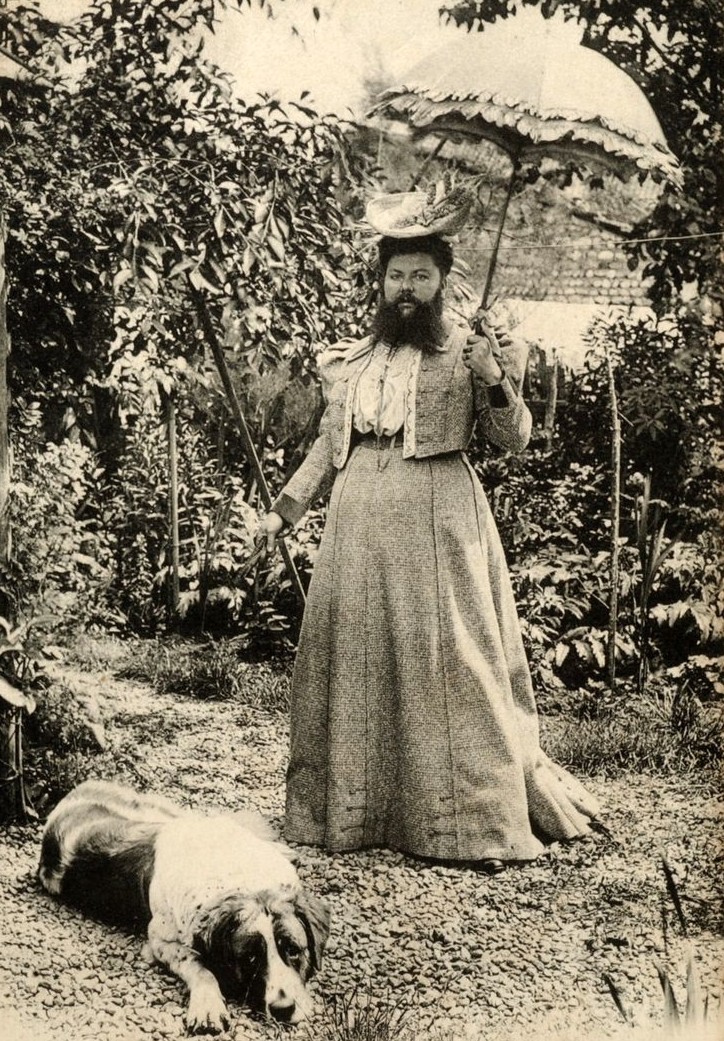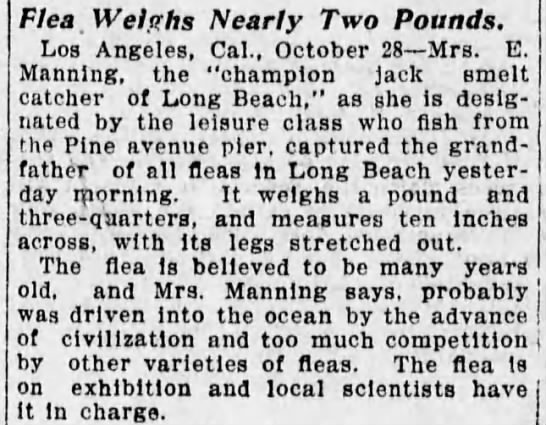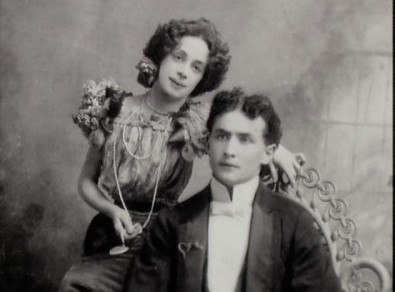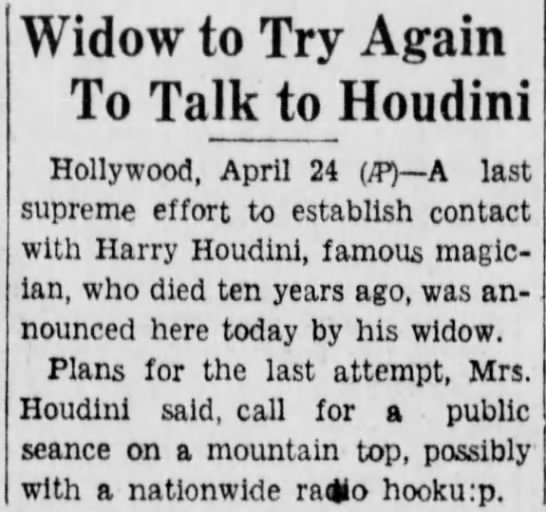File this February 19, 1928 Brooklyn Daily Eagle article about Palestine under “Bad Predictions.” In addition to bemoaning that Palestinian profiteers were turning the land into a dusty tourist trap and a squalid one at that, it also openly scoffed at the notion that Jewish settlers, still a target of casual anti-Semitism, could ever be a power in the region. The new settlement of Hapharalm, or Israel, was singled out as particularly “laughable.”
You are currently browsing the archive for the Old Print Articles category.
Vladimir Bekhterev had a great brain, but he lacked diplomacy.
Joseph Stalin probably was a “paranoiac with a short, dry hand,” but when the Russian neurologist reportedly spoke that diagnosis after examining the Soviet leader, he died mysteriously within days. Many thought he’d been poisoned to avenge the slight. Or maybe it was just a coincidence. A cloud of paranoia envelops all under an autocratic regime, whether we’re talking about Stalin in the 20th century or Vladimir Putin today: Some deaths are very suspect, so all of them become that way. At any rate, the scientist’s gray matter became an exhibit in his own collection of genius brains. An article in the December 27, 1927 Brooklyn Daily Eagle recorded the unusual series of events.
Tags: Joseph Stalin, Vladimir Bekhterev
Tags: Bal Broma, Signor Blitz
Tags: F.B. Anthony
If you thought the public mourning over Steve Jobs’ death seemed outsize, just imagine what went on when Thomas Edison, whose contributions were much more foundational, was at life’s end.
While Edison didn’t create the first incandescent lamp (that was Sir Joseph Wilson Swan whom he eventually partnered with), his 1879 invention and business acumen enabled the brightness of modernity. It was this accomplishment among his many that was celebrated with “Light’s Golden Jubilee” in 1929, a live celebration of the Edison bulb that was broadcast on radio. President Hoover was there in person, and Albert Einstein, Madame Curie, Orville Wright and Will Rogers were a few guests who were patched in remotely. Edison reenacted his eureka moment and entire cities put on blinding light shows. It was a merry time that beat by just four days the arrival of the stock market crash that begat the Great Depression.
In 1931, when the inventor died, many American schools were closed and everything from lightbulbs to trains were turned off for a moment in Edison’s honor. A pair of Brooklyn Daily Eagle articles embedded below recall the elaborate expressions of gratitude.
____________________
From October 20, 1929:
From October 21, 1931:
Tags: Thomas Edison
Add George Bernard Shaw to the list of history’s perplexing anti-vaxxers, people who somehow believe inoculations, which have done immense good for humanity, are dubious. A lifelong critic of vaccines, Shaw carried his ludicrous theories into his dotage, and, eventually, his grave. When he was 92, a medical official appealed to him to see if the playwright had experienced a late-life apostasy. No such luck. An article in the August 25, 1948 Brooklyn Daily Eagle told the story.
In a time of hysteria, justice is only the first casualty. Human lives often follow.
It’s hard to make sense in retrospect of the 1950s trial of Julius and Ethel Rosenberg, accused Soviet spies, because there was very little sensible about the Communist witch hunt of that era. Charged with a crime that “jeopardizes the lives of every man, woman and child in America,” the couple certainly didn’t get a fair hearing.
I thought of this agonizing piece of our history when E.L. Doctorow, author of The Book of Daniel, a fictionalized take on the topic, died recently. As the novel reminds, it was an especially painful period for many Americans because the two Rosenberg children, Michael and Robert (later adopted by Abel and Anne Meeropol), were collateral damage. Embedded is a January 4 1953 Brooklyn Daily Eagle article which covers the boys visiting their parents six months before their execution.
Tags: Ethel Rosenberg, Julius Rosenberg, Michael Meeropol, Robert Meeropol
Col. William “Billy” Breakenridge was tossed into the belly of the beast in 1879 when he became Assistant City Marshal of the hell-raising, often-lethal city of Tombstone, Arizona. Somehow he lived to tell the story, which he did quite literally nearly 50 years later, soon before his death, when he published his autobiography, Helldorado. Even this literary effort, far removed from the gun-slinging madness, caused conflict, as Wyatt Earp, portrayed in its pages as a low-down scoundrel, protested its verity. An article about the book was published in the June 12, 1929 Brooklyn Daily Eagle.
Tags: James Finnegan
Televox was the 1920s robot that reportedly fetched your car from the garage or a bottle of wine the cellar. While these feats, along with many others, were said to have been ably performed, the cost of such a machine made it unmarketable.
Televox was also the star attraction of a very early insinuation of robotics into the American military when, in 1928, he barked out orders to the grunts. It was a bit of a publicity stunt but also the beginnings of robotizing war, which some then thought implausible, though nobody does now. An article follows from the June 11, 1928 Brooklyn Daily Eagle.
Tags: Roy J. Wensley
Tags: M. Lanquie
Tags: Peter Verdine
Once Ernest Hemingway was dead and his cult of personality vanished, his stock as a writer fell precipitously, which was justice. It’s difficult to believe now that Hemingway was considered the greatest writer of his age by many while he was alive. He got somewhere with The Sun Also Rises, but the rest of his work was largely overrated, and he’s most interesting now for the era he lived in and for being representative of a particular type of damaged American male, one who marked his pages with symbolism of sexual dysfunction while boasting of a zeal for big-game hunting. What a douche. In an article in the April 25, 1934 Brooklyn Daily Eagle, he told report Guy Hickok about Depression Era safaris.
Tags: Ernest Hemingway, Guy Hickok
From the November 20, 1910 New York Times:
Berlin–The scientific sensation of the hour in Germany is the talking dog Don, a dark-brown setter belonging to a royal gamekeeper named Ebers at Thiershütte, near Hamburg. Don promises to become as celebrated an attraction as the horse Clever Hans, which startled the sociological savants of Europe eight years ago with his alleged mathematical feats.
Karl Hagenback, the world-famed animal dealer, has offered Don’s master $2,500 for the privilege of exhibiting the dog in the Hagenback outdoor menagerie at Hamburg. The dog’s vocabulary, it is said, already embraces six words.
His alleged elocutionary powers came to light early this week as the result of reports from the United States that Prof. Alexander Graham Bell had succeeded in teaching a terrier to speak. It was declared that Germany not only possessed a dog with similar gifts but a dog which had been talking for five years, in fact, ever since he was six months old.
The story was first considered a joke, but Thiershütte all the week has been the Mecca of interested inquirers, who have come away convinced that Don is a genuine canine wonder. His callers included a number of newspaper men, who went to Thiershütte to interview the dog. The gamekeeper, Ebers, affirms that the dog began talking in 1905 without training of any kind. According to his owner, the animal sauntered up one day to the table where the family were eating, and, when his master asked, ‘You want something, don’t you?’ the dog stupefied the family by replying in a deep, masculine tone, ‘Haben, haben,’ (‘Want, want’). The tone was not a bark or growl, it is declared, but distinct speech, and increased in plainness from day to day as his master took more interest in the dog’s newly discovered talent.
Shortly afterward, the story goes, the dog learned to say ‘Hunger’ when asked what he had. Then he was taught to say ‘Küchen,’ (cakes) and finally ‘Ja’ and ‘Nein.’ And it is added that he is now able to string several of these words together in sensible rotation and will say ‘Hunger, I want cakes,’ when an appropriate question is addressed to him.•
Tags: Jules Verne
The year before “Professor” Alphonse King, whose academic credentials were questionable, reportedly crossed the Niagara River on a water bicycle, he tried to traverse its channel with tin shoes of his own invention. Each weighed 30 pounds, and the results were unsurprisingly mixed. From the December 12, 1886 New York Times:
Buffalo–An attempt was made to-day to outrival the feats of Donovan, Graham, Hanslitt, Potts and Allen in braving the terrors of Niagara, which though a failure in one way, was a success in another. Mr. Alphonse King, who is the inventor of a water shoe, gave exhibitions some years ago in this country and Mexico and not long ago in Europe. He gave one in the Crystal Palace in London, and while there attracted the attention of Harry Webb, an old-time manager, who made him an offer of a year’s engagement to come to this country. While here some time ago Mr. King had looked over Niagara River below the Falls and believed that he could walk across the channel on the patent shoes. He came to this country four weeks ago and has since that time been in New-York City practicing for the trip. While there, Thomas Bowe, hearing of King’s determination to attempt the trip, made a wager of $1,500 with Webb that King could not walk 100 feet in the current. The money was deposited with a New-York newspaper, and on Friday afternoon Messrs. King and Webb, accompanied by A.C. Poole, of Poole’s Eighth Street Theatre, reached the Falls.
The trip to-day gave King two cold water baths, and demonstrated that while he could walk with or against the current all right it was impossible to walk across the river because of the eddies, which twice upset them. He retired confident that what he set out to do could not be done. King’s ‘shoes’ are of tin, 32 inches long, 8 inches wide, sloping at the top, and 9 inches deep. Each weighs 30 pounds. They are air-tight and have in the middle an opening large enough to admit the feet of the wearer. At the bottom are a series of paddles, which operate automatically as fins.•
From the January 11, 1885 Brooklyn Daily Eagle:
A Barton County man has a living chicken without a head. Attempting to cut off a chicken’s head, the axe passed through the head of the chicken immediately in front of the ears, thus leaving a small portion of the brain attached to the neck. The chicken did not take this as an execution of his death warrant and got up and stood on his feet, to the astonishment of this would be executioner, who then contrived a plan to feed him by dropping food and drink into the thorax, which has so far proved a success. The chicken is now doing well.•
New York City had nearly a thousand millionaires in 1905, and seemingly everyone wanted to part them from their money. Cranks would frequently write a gigantic number on a piece of scrap paper and expectantly hand it to a bank teller, believing it was a sure thing. They were escorted from the building–and often sent to Bellevue. But in the waning days of the Gilded Age, some took things a step further, paying unannounced visits to the well-to-do in their mansions. Precautions were taken, which included howitzers. From an article in the November 12, 1905 New York Times:
…The Morosini mansion at Riverdale-on-the-Hudson is equipped with very extraordinary and picturesque apparatus as a proof against burglars and other unwelcome visitors. Several small-bore cannon and sundry howitzers are planted around the house, each piece of ordinance being connected with the house by an electric wire.
Whenever occasion demands, a button may be pressed inside the mansion, and any one or all of the cannon can be fired off. In addition to this novel safeguard the grounds surrounding the mansion can be illuminated by means of electric bulbs scattered thickly among the trees and shrubbery.
Recently there was occasion one night for the police to answer a call from the Morosini mansion, two servants having become obstreperous. As the vehicle containing two officers from the King’s Bridge Station passed through the gate, the lawn for a hundred feet about suddenly burst into light. Adjacent trees glowed with a hundred dazzling flashes. Surprised, the officers came to an abrupt halt. But presently continuing on toward the house, every foot of the way was similarly illuminated, lights budding everywhere, making the grounds almost as brilliant as day. During a subsequent survey of the premises the police learned that all the windows on the ground floor were connected with heavily charged electric wires. When the family retires a switch is turned on, and any one attempting to open a window from the outside is apt to be fatally shocked.•
Tags: Mrs. E. Manning
Apart from E.L. Doctorow, no one was able to conjure the late Harry Houdini, not even his widow.
But she certainly tried. A famed debunker of spiritualists, Houdini made a pact with his wife, Bess, that if the dead could speak to the living, he would deliver to her a special coded message from the beyond. Nobody but the two knew what the special message was. When a poorly received punch to the abdomen in 1926 made it impossible for the entertainer to escape death, his widow annually attempted to contact him through seance. No words were reportedly ever exchanged. The following are a couple of Brooklyn Daily Eagle articles about the wife’s attempts to continue the marital conversation.
_________________________
From April 24, 1936:
From February 12, 1943:
Tags: Harry Houdini, Wilhelmina Beatrice Rahner "Bess" Houdini








